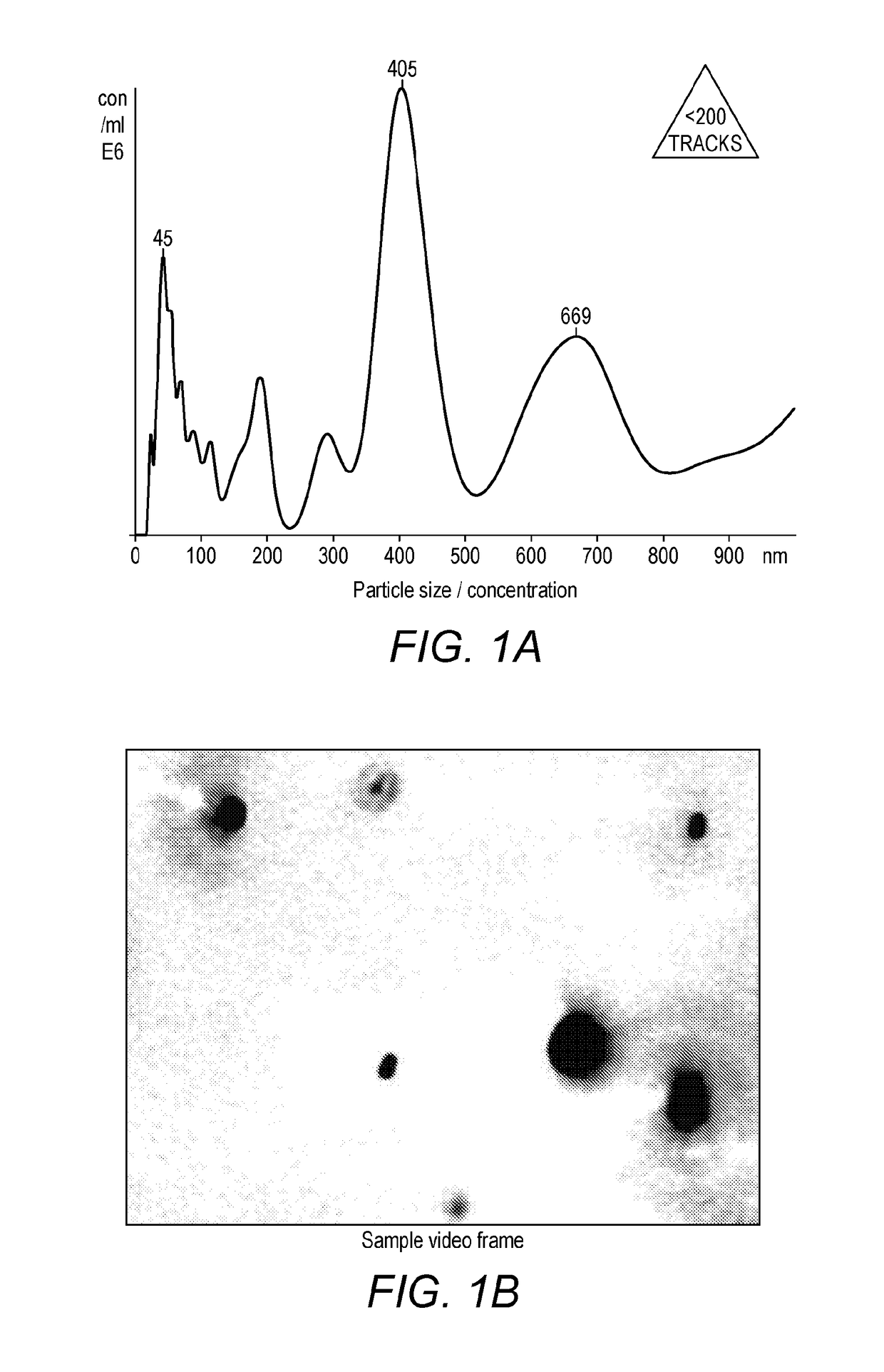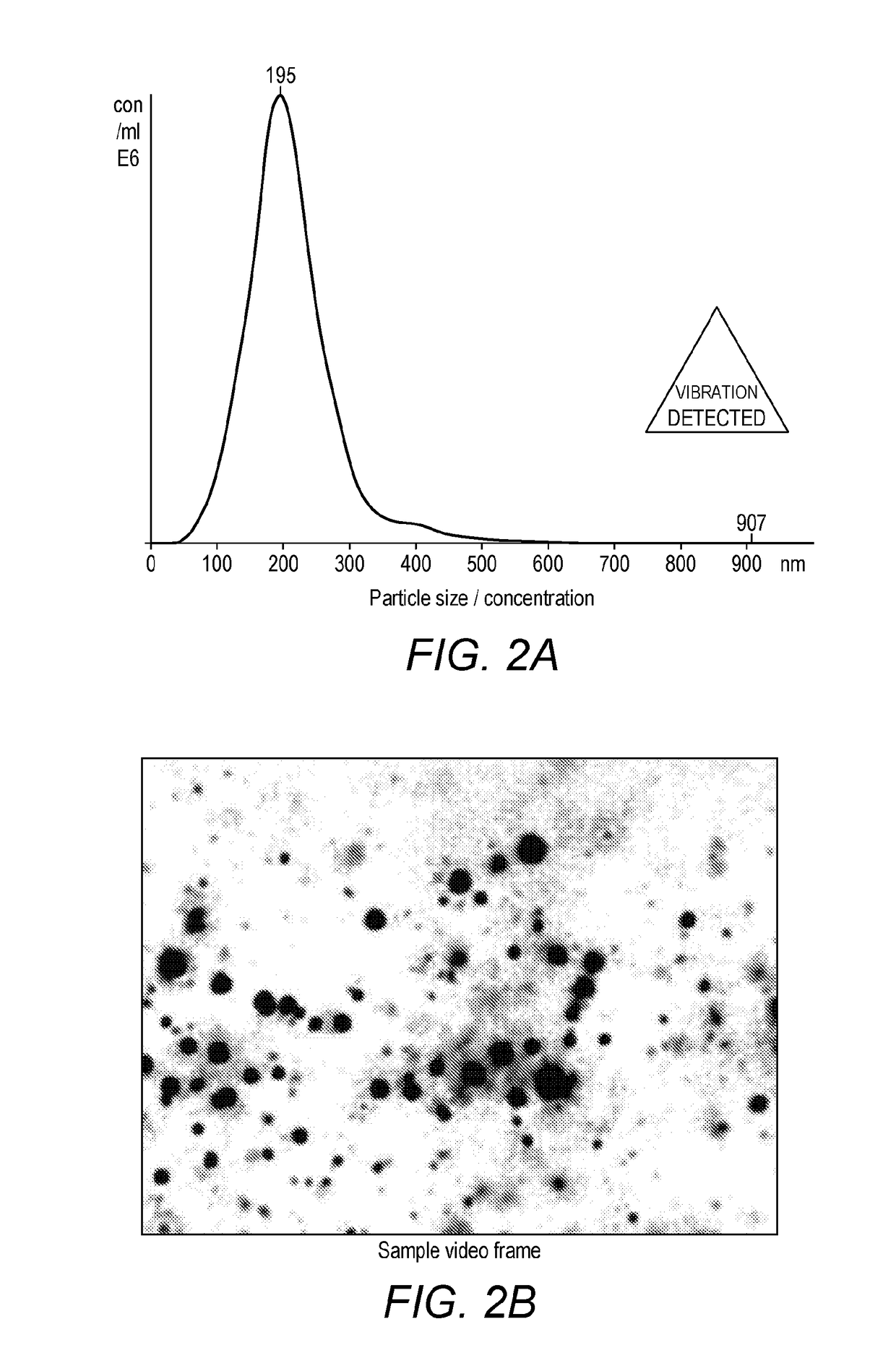Composition and methods of treatment
a technology applied in the field of composition and treatment, can solve the problems of side effects, polyenes are toxic to mammalian cells, and the treatment of such infections remains problematic, so as to achieve effective administration of antifungal agents, reduce dosage, and maintain the effect of antifungal agents
- Summary
- Abstract
- Description
- Claims
- Application Information
AI Technical Summary
Benefits of technology
Problems solved by technology
Method used
Image
Examples
Embodiment Construction
[0076]Embodiments of the present invention will now be described, by way of example only, with reference to the following experiments and accompanying figures, in which:
[0077]FIG. 1A is a graph showing the size distribution of particles formed by mixing 0.1 mg / ml terbinafine in 30% ethanol and incubating at room temperature for at least 24 hours. The particle size distribution was measured using Malvern Instruments Nanosight LM10 (particle size range=50-800 nm, particle number=0.5×108 particles / ml);
[0078]FIG. 1B is a video frame image of particles formed by mixing 0.1 mg / ml terbinafine in 30% ethanol and incubating at room temperature for at least 24 hours. The particles were visualised using Malvern Instruments Nanosight LM10;
[0079]FIG. 2A is a graph showing the size distribution of particles formed by mixing 0.1 mg / ml terbinafine and 0.3 mg / ml PHMB in 30% ethanol and incubating at room temperature for at least 24 hours. The particle size distribution was measured using Malvern Ins...
PUM
| Property | Measurement | Unit |
|---|---|---|
| size | aaaaa | aaaaa |
| size | aaaaa | aaaaa |
| size | aaaaa | aaaaa |
Abstract
Description
Claims
Application Information
 Login to View More
Login to View More - R&D
- Intellectual Property
- Life Sciences
- Materials
- Tech Scout
- Unparalleled Data Quality
- Higher Quality Content
- 60% Fewer Hallucinations
Browse by: Latest US Patents, China's latest patents, Technical Efficacy Thesaurus, Application Domain, Technology Topic, Popular Technical Reports.
© 2025 PatSnap. All rights reserved.Legal|Privacy policy|Modern Slavery Act Transparency Statement|Sitemap|About US| Contact US: help@patsnap.com



